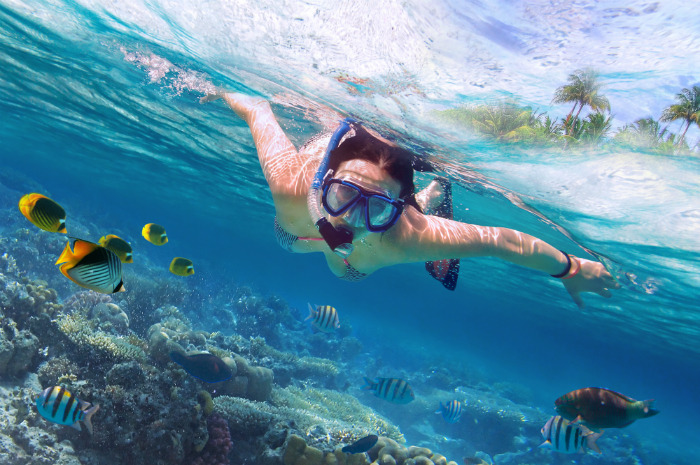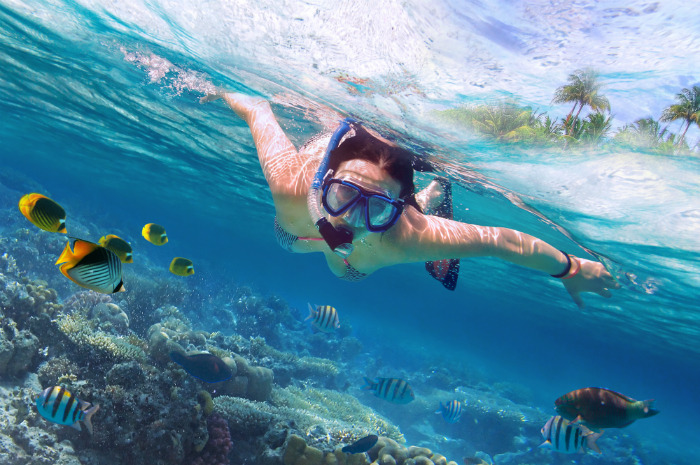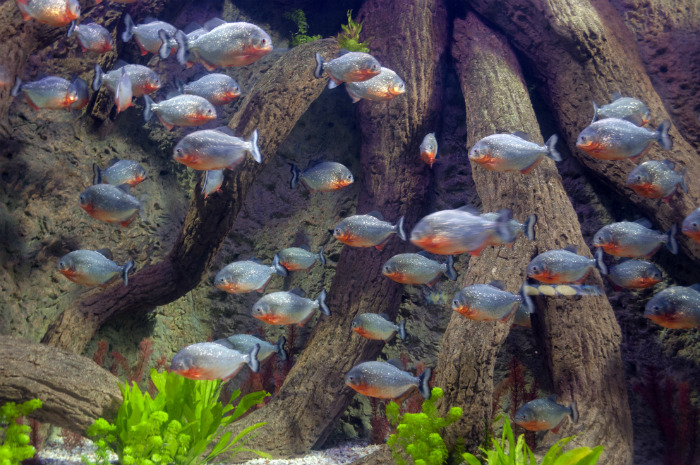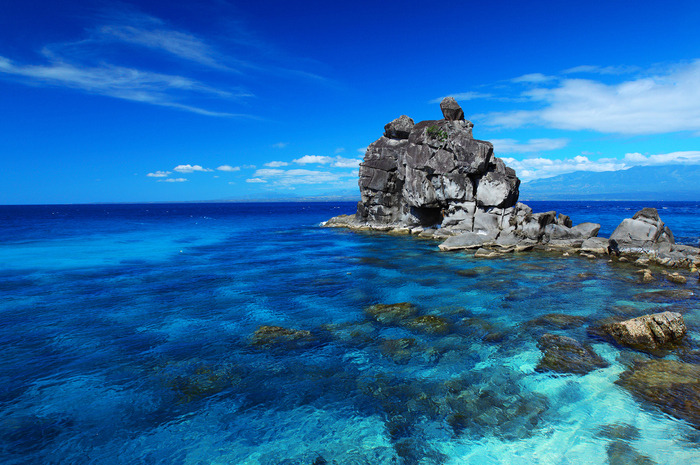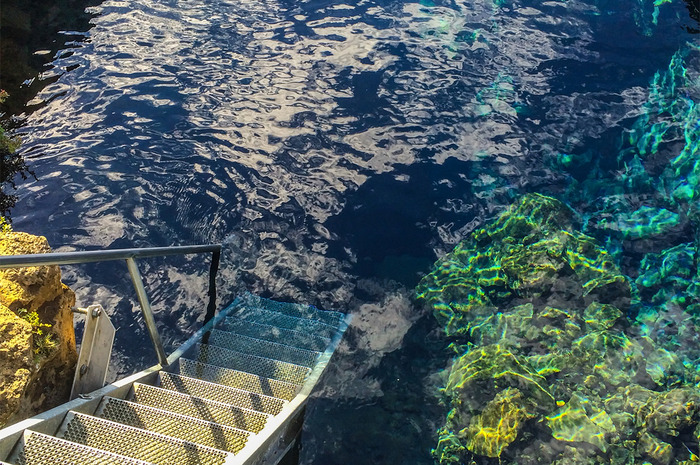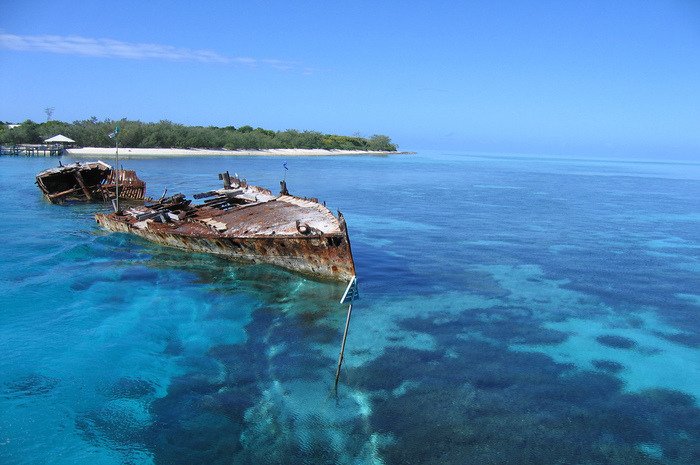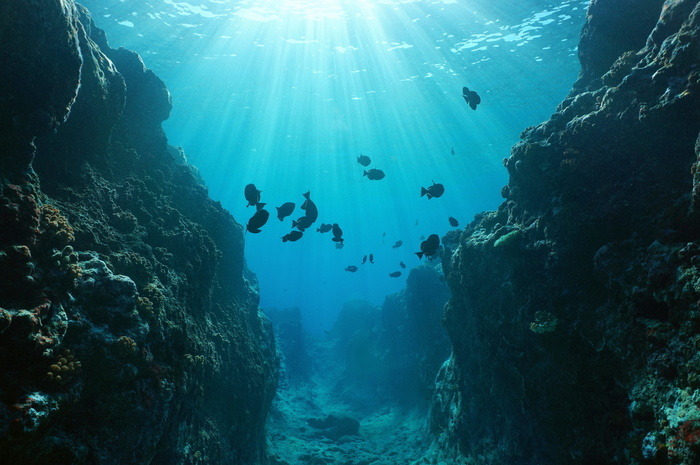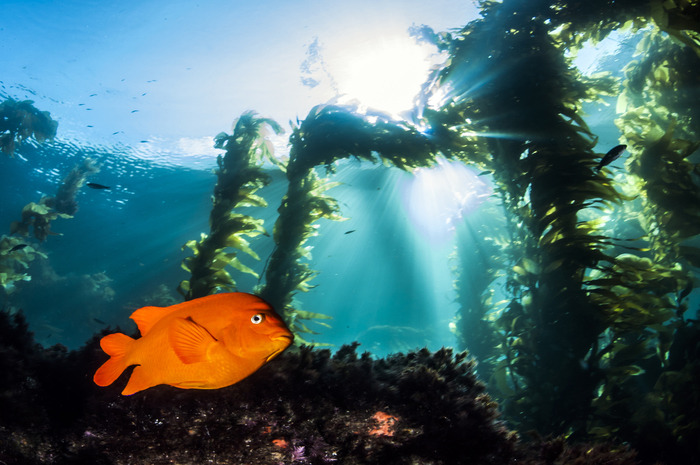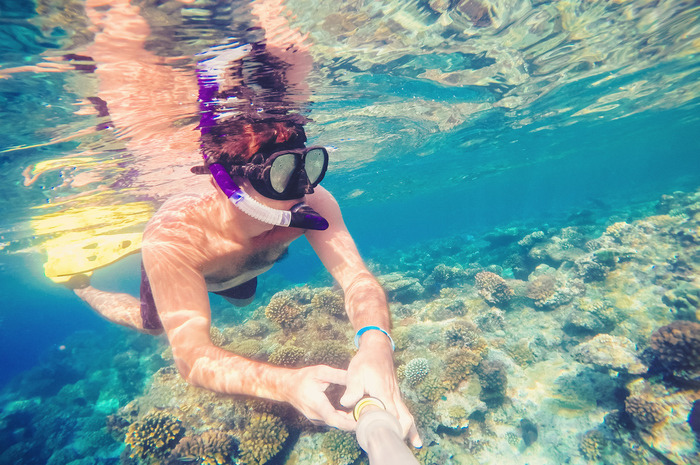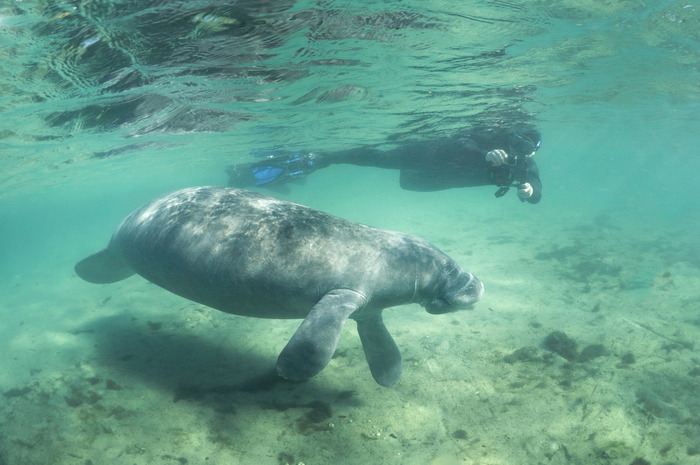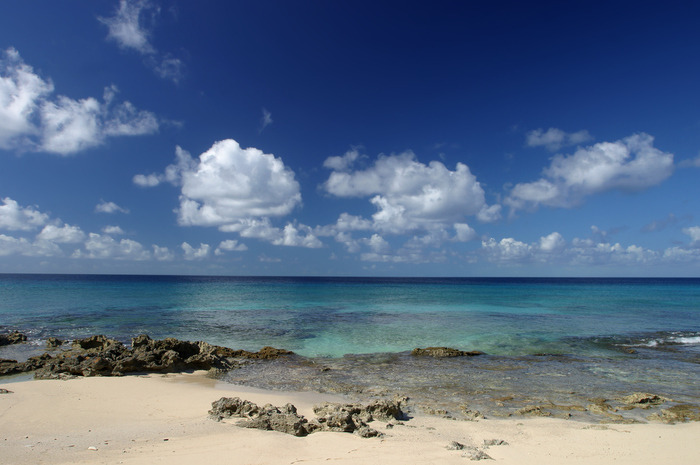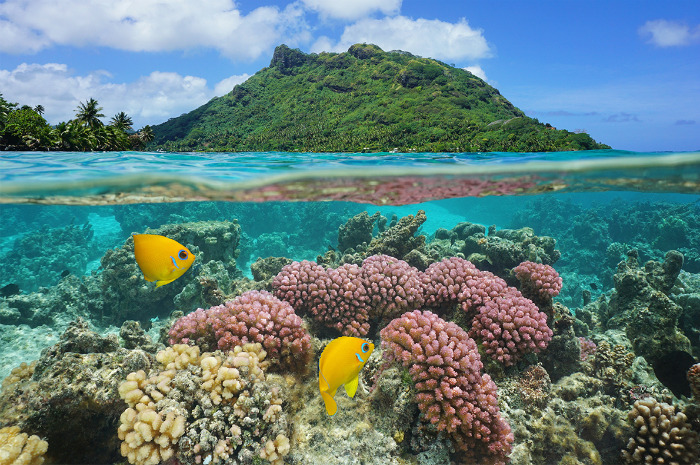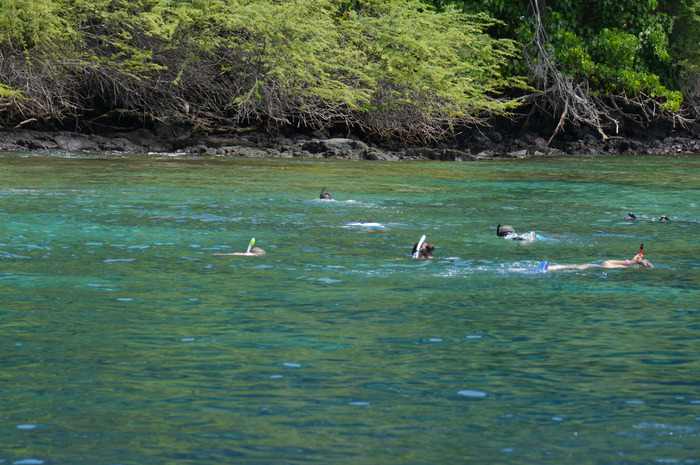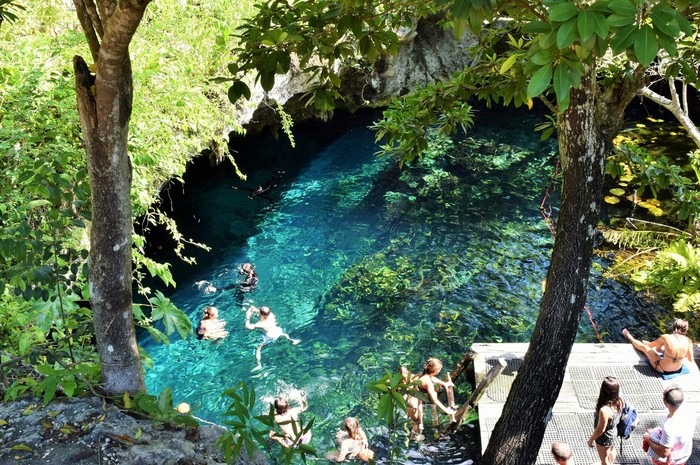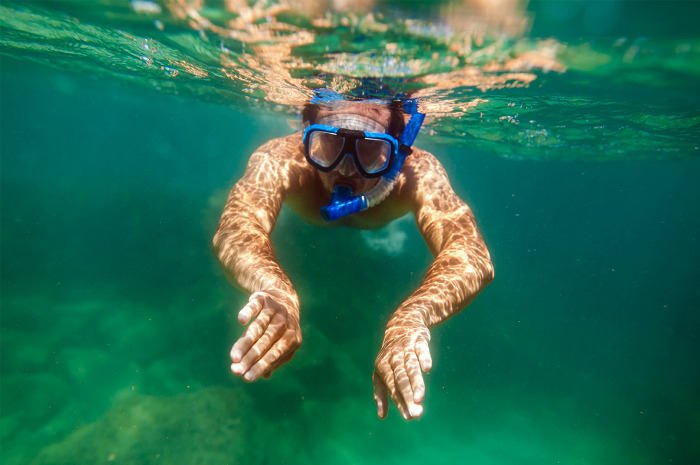Best Snorkeling Adventures In The World
Best Snorkeling Adventures in the World
Snorkeling is the perfect way to get close to pure marine life without swimming at unnerving depths. Floating calmly in clear blue waters and gazing at bright and colorful flora and reefs swarmed by many different kinds of fish species makes for an unforgettable trip. What makes it an incomparable experience is the destination. Snorkeling is not all about warm water, popular beaches and tropical fish. Some of the best places to look at the sea life below you are in icy cold seas and rivers, between two continents, or in isolated ridges. Sometimes your companions can be much bigger than you – like humpback whales or dolphins.
Bimini Islands, Bahamas
Avid snorkelers will have Bimini Islands at the top of their bucket lists. The tiny island is just about 7 miles long and some 700 feet wide, but it's located along the warm currents of the Gulfstream boasting unusually diverse sanctuary of coral reefs, white sand beaches and fascinating marine life. You may also get to explore the road leading to the lost city of Atlantis. The most famous site is possibly the wreck of the 282-foot concrete ship Sapona. Go there and you may end up swimming with dolphins.
Les Medes Islands, Spain
Spain is not a country where people go for an amazing swimming or snorkeling experience. But the Medes Islands, near the town of L'Estartit, are one of the most important and richest marine flora and fauna reserves in the western Mediterranean. They are a protected area which has helped with the spectacular recovery of the wealth of the seabed, according to Visit Estartit. You'll see lots of schooling rays, octopuses, eels, and barracuda.
Apo Island in the Philippines
Apo Island, a small volcanic island, is a popular destination for scuba divers. But snorkelers won't be disappointed. They, too, get to swim with giant turtles, see stunning colorful corals, and many different kinds of fish. Go snorkeling in the protected marine sanctuary of Apo Island and around the rock formations as well.
Thingvellir National Park, Iceland
Snorkeling in Iceland, where some of the clearest water on the planet is, is definitely on the bucket list of adventurers. It's going to be cold and you'll need a drysuit but the water is turquoise clear, so clear that visibility is virtually unlimited. You'll bobble above magnificent rock formations and explore sea grasses so green they seem surreal. Snorkeling in the Silfra fissure is literally snorkeling between the North American and Eurasian continents.
Heron Island, Great Barrier Reef, Australia
The Great Barrier Reef is one of the most colorful places on Earth. It is Australia's natural wonder, larger than the Great Wall of China and the only living thing on earth visible from space. Heron Island offers easy access to the Great Barrier – just get in the water and you'll be among ridges overrun with 900 different species of sea life, including parrotfish, giant turtles, surgeonfish, sea cucumber and starfish.
Rurutu, Tahiti
The best time to go is between July and October when southern humpback whales move to the water near Tahiti to mate and give birth. Rurutu is actually known as the Island of Whales. You are not allowed to approach the whales but some of them may come near you.
Lover's Cove, Catalina Island, California
By far the Lover's Cove is the most popular snorkel spots off Catalina. It is a protected area with kelp forest, rock reef, and a "zoo" of cool-water inhabitants. Guides can help you in by boat, or try heading out on your own from the Pebbly Beach access stairs; just don't forget your flag marker. Snorkelers will see sea stars, eels, anemones, octopuses, and, most notably, the brilliant orange Garibaldi fish.
Safaga, Egypt
The Red Sea is a popular snorkeling destination. But you won't see huge crowds at the Safaga port. It is known for its untainted vibe, black sand dunes and mineral springs. "Astounding reefs to explore, amazing kite and wind surfing conditions, never-ending beaches of black and gold sand dunes, a cultural day trip to Mons Claudianus where lie the remnants of a Roman quarry, the peace and serenity of a start-up touristic destination... that's what Safaga is all about," an Egyptian tourist site says.
Crystal River, Florida
This is the best place to go swimming with manatees and the best time is in September and October when there is a rise in the manatee population. Reputable outfitters can take you to the manatees without disturbing their fragile habitat and provide all the gear you need, including wetsuits. The water temperature in the river is a brisk 72 degrees year-round.
Salt Cay, Turks and Caicos
Snorkelers see dolphins and even migrating humpback whales in the winter. Cotton cay, a 4-mile uninhabited island just north east of Salt Cay, is a popular snorkeling destination. You get to see underwater jungles of elk horn coral with nurse sharks and sting rays. A ship that wrecked there in 1790 is still clearly visible, as it's just 20 feet underneath you. Many areas offer 100-foot visibility. The water is pristine, and has some of the best reefs in the region.
Champagne Reef, Dominica
There are several active volcanoes in Dominica, which affect the reef. Underwater geothermal springs vent gasses in the form of thousands of warm bubbles giving snorkelers a feeling of swimming through a giant glass of, literally, Champagne, according to ChampagneReef.com. You can expect to see a myriad of sea life including sponges, lobster, parrot fish and a resident population of Hawksbill turtles.
Buck Island, St. Croix, US Virgin Islands
Buck Island Reef National Monument was established to preserve "one of the finest marine gardens in the Caribbean Sea." The 176-acre island and surrounding coral reef ecosystem support a large variety of native flora and fauna. The elkhorn coral barrier reef has extraordinary coral formations, deep grottoes, abundant reef fishes, sea fans and gorgonians. At the eastern most point of the reef is the famous underwater trail.
Huahine, French Polynesia
This is a wonderful and not very well-known snorkeling destination. Under the waters surrounding this hidden gem you'll see an abundant marine life – clownfish, eels, green sea turtles, and yellow and white saddleback butterflyfish. You can be under water for hours without realizing it because there is so much to see in the coral reefs, gardens and lagoons.
Kealakekua Bay, Big Island, Hawaii
This isolated bay is an unspoiled marine sanctuary filled with colorful marine life and coral where you can see, among other fish, whales and dolphins. Tucked along this bay are ancient religious temples and also the historic monument where world explorer Captain James Cook met his fate, according to Hawaii Activities. Archaeological sites are only accessible by rugged foot paths or by kayak.
Cenotes, Cancun
These deep, freshwater-filled and mysterious sinkholes formed when the roofs of limestone caverns collapsed and filled with water. Many cenotes boast pristine turquoise waters and a beautiful array of stalagmites and stalactites that formed over millions of years.
Plaza Sur, Galapagos
South Plaza is one of the smallest yet richest islands in the archipelago, according to Galapagos Travels, known for its rich marine life. The abundant and friendly sea lions – the largest animals on the islands, with adult males weighing up to 550 pounds – is why snorkelers go there. Covering the seabed you'll also find damselfish, triggerfish, hogfish, sea stars and urchins.
Kankakee, Illinois
Kankakee offers an unconventional snorkeling experience. The Haigh Quarry is about 60 miles south of Chicago. The biggest attractions are old farm equipment underwater. You will see an odd assortment of old boats and farm equipment and plenty of cold-water fish. You'll also see a lot of bass, bluegill, catfish and sunfish.
